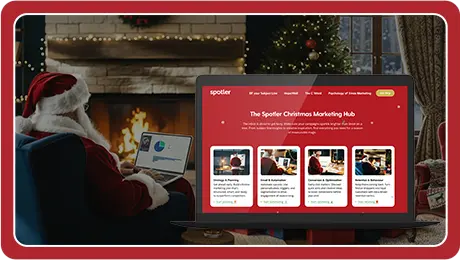Marketing Automation Glossary
We explain frequently used marketing automation terms, acronyms, and definitions.
AB test
AB testing is a technique to figure out which version of your email or page is best, based on real behaviour, not assumptions.
Abandoned cart campaign
More than half of your website visitors don’t finish their purchase. An abandoned cart campaign helps re-spark interest in buying your product.
Above the fold
Above the fold refers to the part of a web page or email that’s visible without having to scroll.
Accelerated Mobile Pages (AMP)
AMP is a way to make mobile content faster and more usable for those who browse on slower connections or don’t wait for heavy pages to load.
Acceptance Rate (AR)
The acceptance rate is the percentage of your emails that are accepted by the recipient’s mail server.
Acquisition
Acquisition is about gaining new customers or users. Those who sign up, subscribe, or buy what your company offers.
Alt text
Alt text is a written description of an image, designed to be read by screen readers for people with visual impairments.
Application Programming Interface (API)
An API is a set of rules that lets two software systems share information and work together.
At sign (@)
The at sign has become a universal symbol of communication, connection, and context. It’s used in different ways across the Internet.
Birthday Campaign
A birthday campaign is a marketing tactic that involves sending personalised messages to customers on or around their birthday.
Blind Carbon Copy (BCC)
The ‘blind carbon copy’ is a feature in email that lets you privately send a message to someone without having the main recipient know about it.
Bot clicks
Bot clicks are automatic interactions with digital ads, emails, or website links triggered by software rather than real users.
Bulk email
Bulk email is one of the most direct and consistent ways to communicate with a large audience.
Buyer Journey
The buyer journey is the path someone takes before they become a customer, typically in the stages ‘Awareness’, ‘Consideration’, and ‘Decision’.
CAN-SPAM
A US law passed in 2003 to set basic rules for commercial email. It is in some shape comparable to GDPR.
Carbon Copy (CC)
A carbon copy (or: CC) lets you send a copy of your email to someone without making them the primary recipient.
Churn Rate
Customer churn is about the number of users leaving; revenue churn looks at the money lost when subscribers downgrade or cancel.
Click-through-rate (CTR)
Click-through rate, often shortened to CTR, measures how frequently people click on a link, ad, or call-to-action after seeing it.
Click-to-open (CTO)
The click-to-open shows how many people who opened your email clicked on something inside it.
Confirmed Open Rate (COR)
Confirmed Open Rate (COR) is a metric used in email marketing to measure the number of recipients who opened an email.
Conversion
A conversion is when someone takes a specific action you want them to take, split in macro and micro conversions.
Conversion Rate Optimisation (CRO)
CRO is the process of improving your website (or landing page, email, or app) to encourage more visitors to take a specific action.
Countdown Timer
A countdown timer tells visitors exactly how many hours, minutes, and seconds are left in a promotional campaign.
Cross-sell
Cross-selling encourages customers to purchase additional, related products alongside their main purchase.
Customer Acquisition Cost (CAC)
CAC tells you how much it costs your business to win a new customer: Divide the spent budget by the amount of leads generated. Quick maths!
Customer Data Platform (CDP)
A Customer Data Platform is software that helps businesses gather everything they know about their customers into one place.
Customer Lifetime Value (CLV)
Put simply, it’s the total amount of money a customer is expected to spend with your business over the entire length of their relationship with you.
Customer Relationship Management (CRM)
CRM is both a strategy and a toolset that helps businesses manage interactions with customers and potential customers in one central place.
Customer Retention Rate (CRR)
Customer Retention Rate is a metric that tells you how well your business keeps its customers over time.
Data Management Platform (DMP)
A DMP is a tool that collects, stores, and organises data about your audiences so that you can better target them.
Data Protection Officer (DPO)
A Data Protection Officer is the person responsible for overseeing how a company collects, manages, and protects personal data.
Database
A database holds rows and tables of data that can be sorted, searched, updated, and analysed with precision and speed.
DMARCbis
DMARCbis is an email security tool that helps stop scammers from pretending to send emails from your domain.
Domain-based Message Authentication, Reporting and Conformance (DMARC)
An API is a set of rules that lets two software systems share information and work together.
DomainKeys Identified Mail (DKIM)
DKIM adds a digital signature to the email’s header, which the recipient’s mail server can verify.
Facebook Advertising
Facebook Advertising refers to promoting products or services through paid campaigns on the Facebook platform.
Instagram Advertising
With Instagram Advertising, can place ads through sponsored posts, Stories, Reels, and other formats, targeting audiences based on demographics, interests, and behaviours.
LinkedIn Advertising
Paid advertising on LinkedIn to target professional audiences with tailored campaigns.
Sender Policy Framework (SPF)
Sender Policy Framework (SPF) is an email authentication method that helps verify a sender’s identity to prevent email spoofing.

